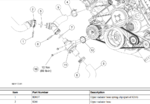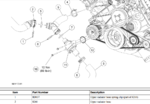So I had noticed a small amount of fluid on the garage floor when I pull out over the last few weeks. At first I thought it was just water. Maybe less than an ounce or so. Then when the car sat for about a week I noticed it was quite a bit more. I finally tracked it down to the connection between the upper radiator hose and the T fitting. Small leak right at the connection. It seems to only leak after everything cools down and I can't see any cracks. I am going to replace the upper hose and the T fitting if I can find one. My local dealer said the T fitting is on a nationwide backorder(that's concerning). A few questions for the experienced. The car has 59k on it currently and is a 2012.
1) Anyone else have the issue?
2) Anything I should know about before attempting this myself?
1) Anyone else have the issue?
2) Anything I should know about before attempting this myself?















